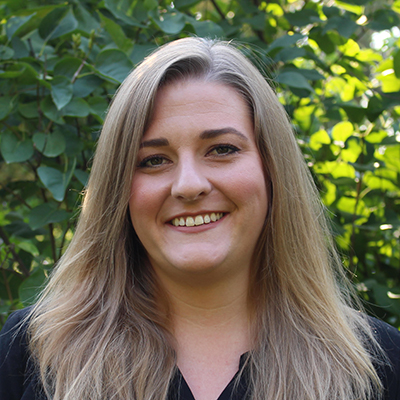
Bridget Sanderson
Former State Director, Environment Missouri Research & Policy Center
Environment Missouri's Director talks about Parkville Nature Sanctuary's Nature Camp 2022
Former State Director, Environment Missouri Research & Policy Center
I’m the Director of Environment Missouri and a former soil scientist and geology student. For many years, Environment Missouri has worked happily in partnership with Parkville Nature Sanctuary, one of the many stunning wildlife reserves in northeast Missouri, which has hiking trails, a waterfall, and educational sites. We have assisted with Parkville’s educational programs, including Ghost Stories in the fall and Nature Camp in the summer.
Typically, children learn in the classroom about soil, the carbon cycle and the environment. However, Nature Camp gives them hands-on, in the field, education on everything from composting to journaling. The theme of Nature Camp 2022 was healthy soil, compost and art in nature. We planted lima beans and identified native plants. These hands-on learning experiences were the best way I learned as a geology student years ago and I see the excitement I had back then in the eyes of the campers now.
Over the last two weeks, we welcomed 31 children, ages 5 to 13, to learn about the crucial role that healthy soils have on climate change mitigation. We enjoyed three days of discovery and hiking in the Sanctuary. With the assistance of other partners and volunteers, we taught the children about the difference between dirt and soil, composting, microplastics, plant identification, birds and how to eat honeysuckle. Some kids were extremely fascinated by the snails.
The Nature Sanctuary’s Executive Director, Kristen Bontrager says by the end of camp, kids were eager to share what they had learned, “We had campers as young as five telling their parents about mycelium and luna moths. There is no future without the youth. Camp teachers worked together to ensure a healthy future by teaching in a fun and meaningful way. When parents picked up their campers, they knew their children had fun learning about how healthy soils will save our future. City staff and volunteers also sent children home ready for a long nap.”
The key takeaway this scientist learned from Nature Camp this year: I was reminded of the importance of hands-on activities when teaching children valuable lessons that can save our planet. These were my three favorite activities:
,
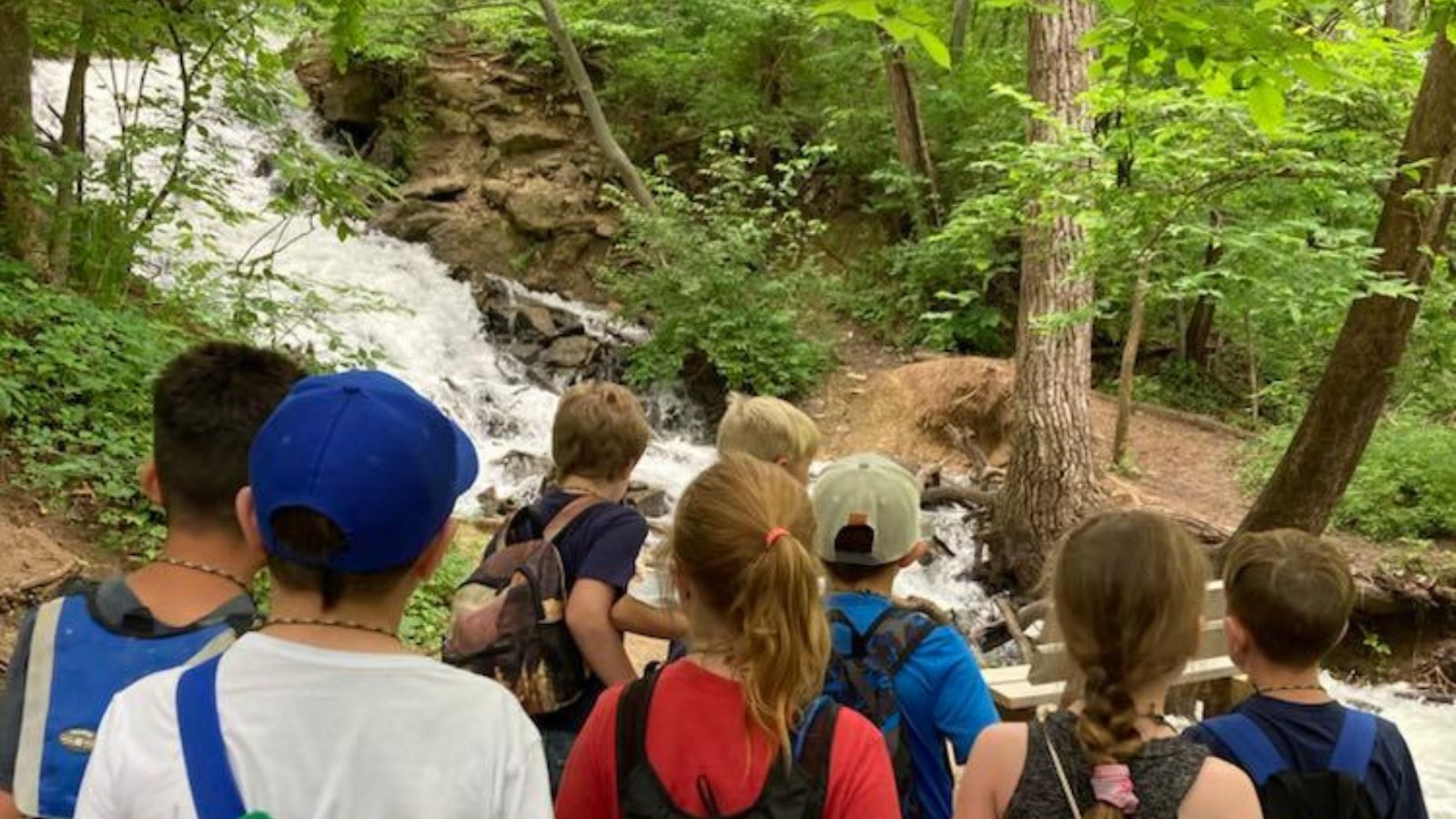
Campers looking at a waterfall
,
Stan Slaughter of Missouri Organics Recycling is an absolute gem, renowned throughout the Kansas City area. For years, Stan, an Eco-Troubadour, has been teaching children using a bucket of worms, posters and terribly catchy tunes. (Yes, I am still singing “Feed it to the Worms,” and “Food Too Good to Waste” a week later.) Stan’s ability to hold the attention of Missourians of all ages, all while educating about compost leaves one thinking that Stan is Kansas City’s own Bill Nye the Science Guy. Even as a person who knows a fair amount about composting and produces her own backyard compost, I still learned so much. We learned about different worm types and which ones will survive in compost, how frequently we should be turning our compost (I’ve done a terrible job of this), and how we should compost all food waste instead of putting it in the landfill. If you live in an area that has streetside composting, such as Compost Collective KC or KC Can Compost, or have an appropriate area in your yard or in your kitchen, please start composting. In the words of Stan, our “food is too good to waste.”
,
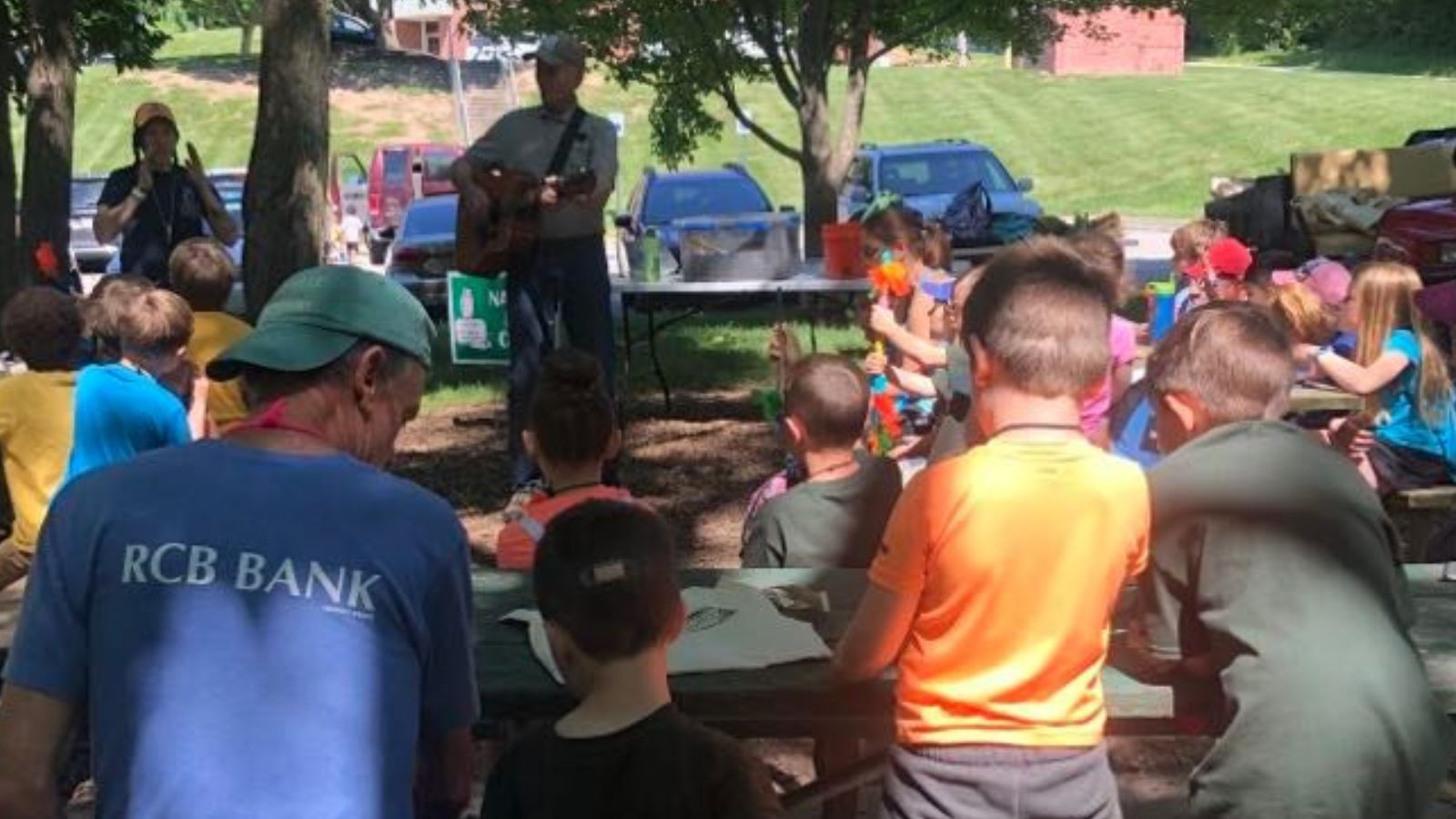
Stan singing at Nature Camp
,
Much like Stan Slaughter, Farmer Dan Krull of Manheim Gardens is an asset to the Kansas City metropolitan area. Dan is a very experienced soil scientist and farmer. He came to Nature Camp with a bucket of worms and a soil auger. This is where the campers learned the most about soil health. With his auger in tow, and an affinity for paw paw trees, he allowed campers to pull soil samples from different areas of the Sanctuary. We pulled samples from turf grass, the butterfly garden, on the trail near an abundant grove of paw paw trees, and in the creek. Campers were then able to visually discover the differences between healthy soil and poor soil. With those active learning techniques, Dan was able to hold the campers’ attention about something as seemingly mundane as soil while still educating about how vital our soil is for our health and the planet.
,
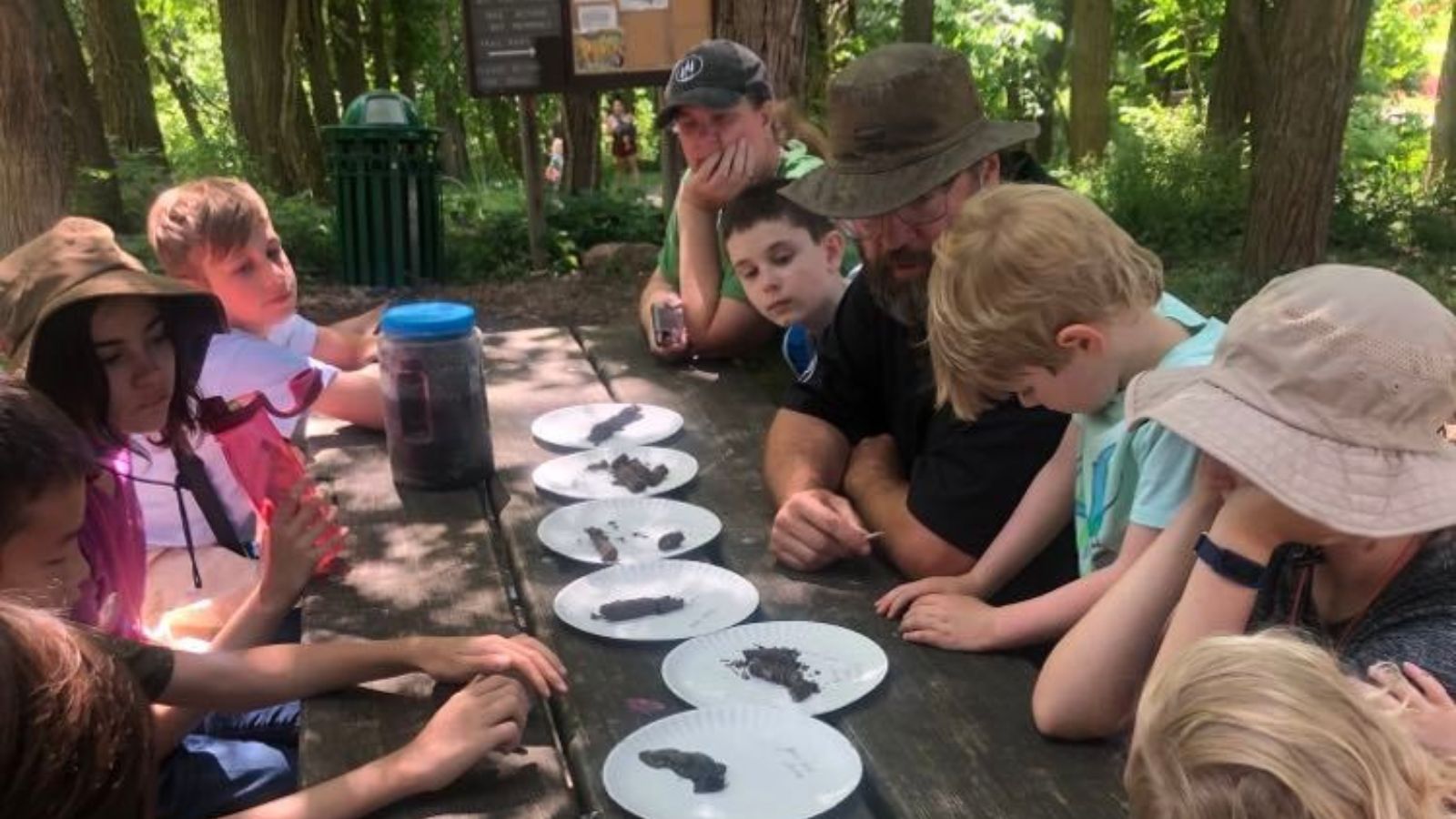
Farmer Dan at Nature Camp
,
While I’m more of a science person than an art person, I appreciated the artistic opportunities the camp gave the kids as well., Mantooth Creative brought us weeks of creative outdoor educational activities. In addition, the community art project called Parade of Hearts is currently scattered throughout the Kansas City metropolitan area, including at the camp. With the help of Mantooth Creative, campers were able to make their own community art project that will forever live in the Nature Sanctuary.
Sisters Katie and Ashley Mantooth, enjoy connecting with the kids. “Letting out some creative energy in nature is something we look forward to every year at camp! We also learned a lot from the other camp leaders this year. We love how art imitates nature on every level, and how both can truly bring the community together,” they wrote me later in a joint email.
The Mantooth sisters led the campers in journaling about what we saw in the Sanctuary. The kids made personal hiking sticks, pine cone bird feeders, nature weaving, mud art, and everyone’s personal favorite: the color wheel scavenger hunt.
,
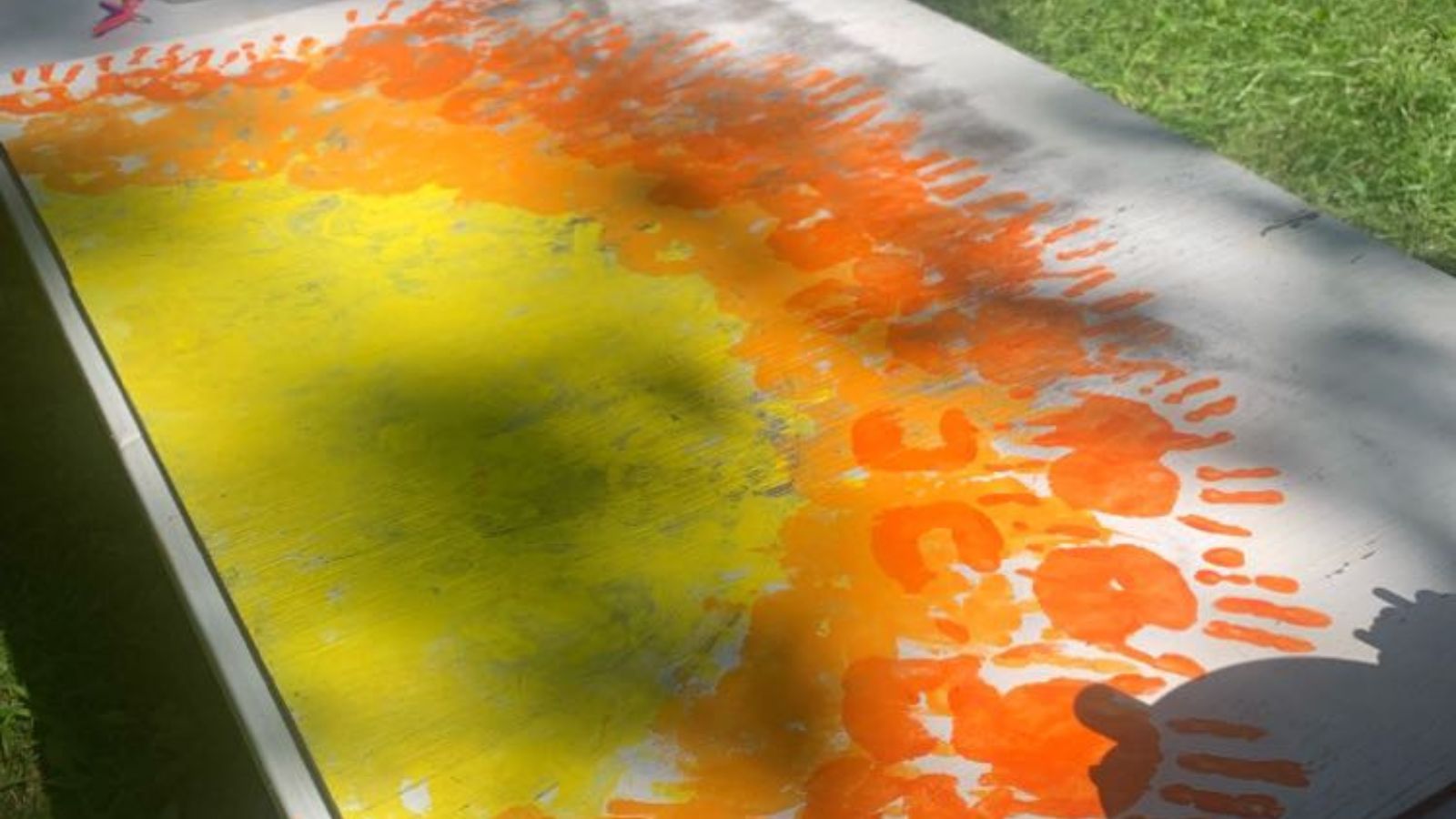
Community Art Project- incomplete
,
The kids may have been 5 to 13 years old, but most of their art outshone mine. I can not stress how bad I am with art and creative projects. One project involved map-making. As one former tectonics professor told me years ago, “Bridget, your maps are perfect but your cross-sections are garbage.” A basic understanding of taking a topographic map to a cross-section can be seen here. Mantooth Creative was able to teach complicated tasks through art in a way I have never experienced before.
I love educating the next generation in a hands-on, creative manner that brings engaging climate science, environmental science and art to kids who are our future. I was able to assist with the children of Parkviille’s education and love of nature and look forward to our lasting partnership. As the Nature Camp saying goes, “There is no climate change action without healthy soils.”
Former State Director, Environment Missouri Research & Policy Center
